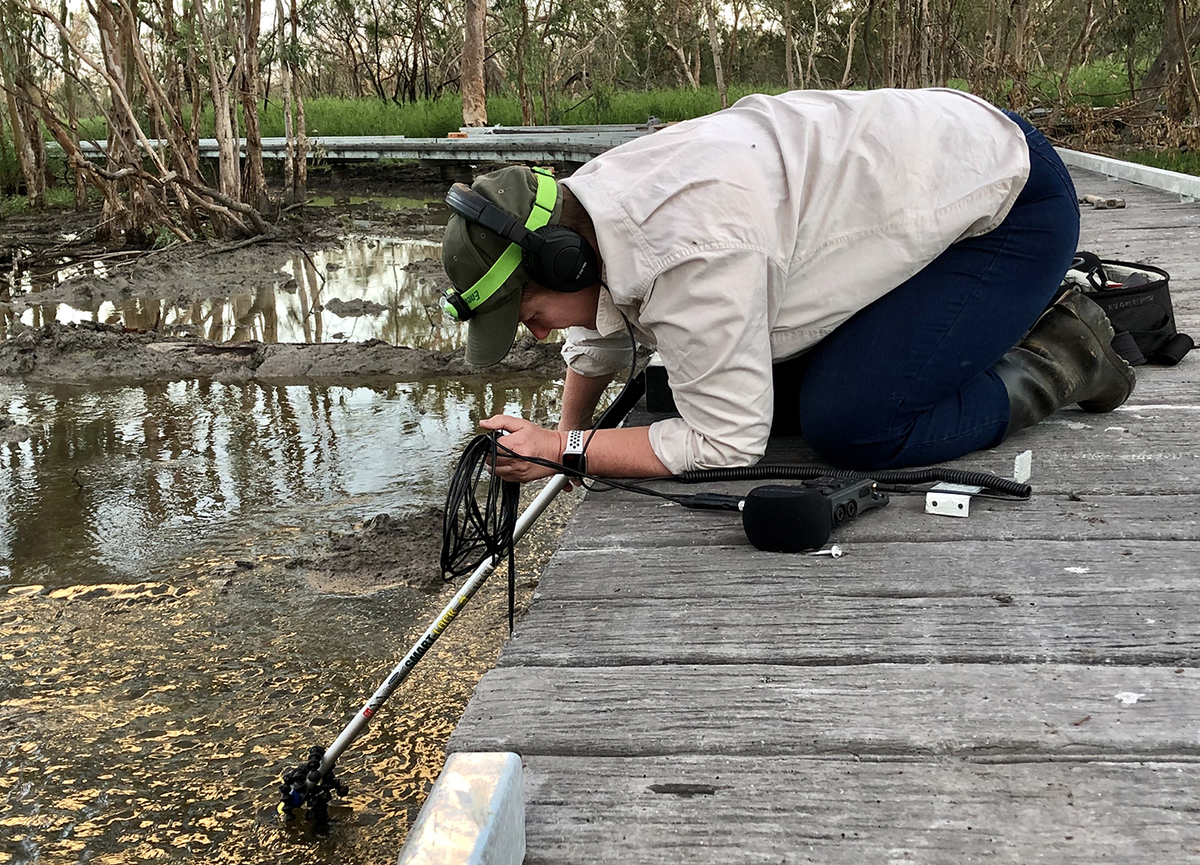Macquarie Marshes takes the world stage
Laura Williams
01 October 2021, 10:06 PM
 Local artist Kim V. Goldsmith is sharing her deep affection for the local wetlands by allowing the whole world to experience it through her art.
Local artist Kim V. Goldsmith is sharing her deep affection for the local wetlands by allowing the whole world to experience it through her art. In February of 2020, local artist Kim V. Goldsmith camped out under the Macquarie Marshes night sky and atop the parched land. Just three days later, the marshes felt a reprieve from the dry, as the first significant water arrived, an 'environmental release' from the Macquarie River. The changing landscape informed her collaboration ‘Mosses to Marshes’, where the Macquarie Marshes will be exhibited across the world.
“It’s not always a pleasant place to be, but I think you’ve got to experience it in all its forms to really appreciate the character of that landscape,” said Ms Goldsmith.
‘Mosses to Marshes’ is an international collaboration where Ms Goldsmith and English artist Andrew Howe documented the sights and sounds of two Ramsar-listed wetlands on different sides of the world, protected by the international treaty Convention of Wetlands.
Goldsmith and Howe were introduced in late 2018 through the international remote collaboration art programme, (Arts) Territory Exchange. Via regular emails, they eventually put together a brief in 2019 for what would become the Mosses and Marshes project. Since then, they’ve compiled extensive site documentation, field recordings, stories, research, and ideas from other artists, wetland communities, land managers, and scientists, with the intention of exploring the place wetlands have in regional communities, now and in future.
“I was connecting audio stories from people who had a connection to the marshes as well. People who’d grown up there and have known the marshes all their life, through to people who had just visited,” said Ms Goldsmith.
The connection that was weaved through everyone’s story was an emotional one.
“Eric Fisher, who after having lived out at Quambone all his life, said it’s a pretty landscape. He said it’s not a word that’s often used, particularly by farmers about the place that they live. It’s just a pretty place to be, and I think that helps people form an identity around the Marshes, their whole being is wrapped up in that landscape,” Ms Goldsmith said.
Ms Goldsmith says that despite the obvious differences between the Macquarie Marshes in Australia and the Fenn’s, Whixall and Bettisfield Mosses that Mr Howe documented on the England/Wales border, there are clear similarities that draw them together, rendering them worthy of being shown on an international stage.
“The rapidly changing climate is having an impact on both wetlands, and that’s an issue that connects it and makes it an international issue,” she said.
The exhibition will be a collection of long and short videos, soundscapes, prints and paintings which will be exhibited in the UK and Canberra before being shown Coonamble’s Outback Arts Creative Arts Centre in April 2022.
Pieces of the exhibition will also end up in Warren's Windows on the Wetlands Centre. Both the Warren and Coonamble shires are home to the Macquarie Marshes.
The work of Ms Goldsmith is largely entrenched in capturing a landscape through its sound, a medium which she says brings people right to the heart of it.
“I’ve been able to record things like the sound of water being taken up through the mud by plants on the edge of the lagoon in the wetland. And the sound inside a Coolabah tree on the floodplain as it vibrates in the weeds in the morning. You can hear the water gurgling through the trunk,” Ms Goldsmith said.
“It doesn’t matter where you are in Alaska, the UK, or Africa. Wherever you are, the sounds can transport you straight into the marshes.”
The first exhibition opened yesterday, 1 October at Qube Gallery, Oswestry UK. A 112-page Mosses and Marshes book will be available by mid-October and Australian events will kick off with a virtual artist talk on Zoom on 14 October ahead of a facilitated international panel discussion on 11 November 2021. More activities are planned for 2022.
In Australia, the project has received funding from the Australian Government through the Regional Arts Fund via Regional Arts NSW, crowdfunding with Creative Partnerships Australia through the Australian Cultural Fund, and from the NSW Government through Create NSW.